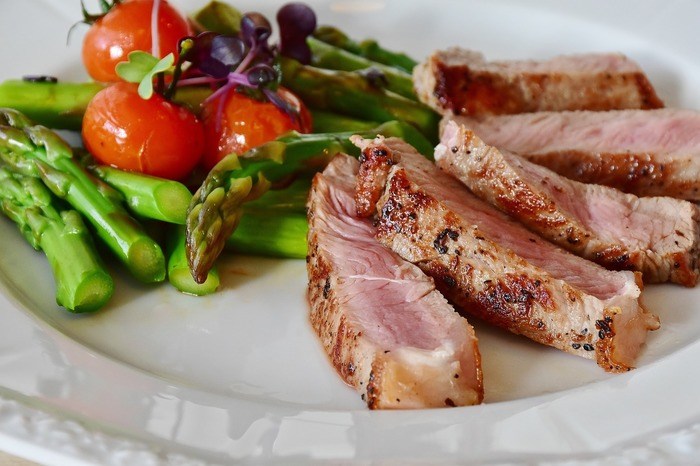How To Break A 72 Hour Fast?
Written by Andrew Brewer. ⚕️Reviewed and fact checked by our medical team.

While they may feel good in the moment, you’ll quickly regret your choices as eating too much too fast can leave you feeling bloated, nauseated, and lethargic. There is a time and a place for these indulgences, but directly after a fast is not it. Instead, you should be more strategic about how you break your fast, especially after not eating for 72 hours.
Key Takeaways
- A 72-hour fast can have several benefits for the body, including weight loss through ketosis. Fasting allows the body to burn fat stores for energy, and the longer the fasting period, the more fat can be burned.
- Intermittent fasting, particularly a 72-hour fast, triggers a process called autophagy, where the body eliminates damaged cells and promotes the regeneration of healthy cells. This can be beneficial for overall health and reducing the risk of developing diseases.
- While there may be an adjustment period and initial hunger during fasting, hunger cues tend to fade over time. Drinking black coffee or water can help suppress appetite temporarily, and engaging in distractions like napping or going for a walk can help take the focus off hunger.
- It is important not to overdo extended fasting periods. A 72-hour fast should only be done one to two times a week to avoid slowing down the metabolism and hindering weight loss. It is recommended to combine shorter fasting windows, like the 16:8 method, with occasional 72-hour fasts for optimal results.
- Engaging in 72-hour fasts, along with other intermittent fasting approaches, can lead to various benefits such as weight loss, improved overall health, and better sleep. By incorporating fasting into a balanced routine, individuals can experience the maximum advantages of this approach.
Start Slowly
You may feel like you’re starving when it’s finally you’re eating window – and in some ways, you were! Your body was breaking down its internal fat stores, cannibalizing its own deposits to turn into energy. However, eating quickly will not make you feel fuller quicker. Instead, it will leave you feeling bloated and uncomfortable.
When you are thinking about your first full meal after a 72-hour fast, you’ll want to break it initially with a small snack that’s packed with nutrients. Consider foods that are high in healthy fats, protein, and fiber. A handful of nuts or bone broth are great options.
Give yourself some time. If you feel good after an hour or two, you can eat a small meal. Again, you don’t want to eat too much too soon. Not only will you not feel great after, but you also don’t want to overload your body with calories.
You are letting your body adjust to returning to its typical eating schedule, and that includes your typical calorie intake. If you want to keep the weight loss going, you need to burn more calories than you eat. That can be hard to do if you binge eat immediately following a fast.
Prep your Food
One way to remove the temptation is to prep your food before you even fast. That way, when it’s time to break your fast, you can reach for your perfectly portioned snacks immediately. This can apply to your snacks and your meals. While it takes a lot of work upfront, it is worth it when you reach decision fatigue at the end of a fast.
You start out with the best of intentions; however, towards the end, you don’t care what you eat, just that you’re able to eat. After the haze lifts, you’ll feel much better if you’re able to stick to your original plan with prepared snacks.
Final Note on 72-hour Fasting
If you have any underlying medical conditions, you’ll want to consult with a doctor prior to participating in a prolonged fast like a 72-hour fast. This is because it may actually trigger issues instead of helping them. For example, diabetics can go into shock and turn hypoglycemic. Some medicines require you to take them with food.
A doctor can help you navigate how to participate in a 72-hour fast, as well as how to properly break it. At the end of the day, you can test out what works for you when you are breaking a fast. Some people may not face the discomfort that others do after eating; however, just be aware of how fasting may make you feel and adjust as needed.
Intermittent fasting is an incredibly powerful tool, and while it has been around for centuries, that doesn’t mean it will work for everyone. Make sure to pick a plan that works for you. Even if you do a 72-hour fast twice a month, it’s still enough to see results.
FAQ
Is it safe to do a 72-hour fast?
Fasting for 72 hours can be safe for most healthy individuals. However, it’s always advisable to consult with a healthcare professional before starting any prolonged fasting regimen, especially if you have any underlying health conditions.
Will I experience intense hunger during a 72-hour fast?
Hunger can be expected during the initial stages of fasting. However, hunger cues tend to fade over time as the body adjusts to the fasting routine. Drinking black coffee or water can help suppress appetite temporarily, and engaging in distractions like napping or going for a walk can also help manage hunger.
Can I drink anything besides water during the 72-hour fast?
While water is the best choice to stay hydrated during a fast, you can also consume other non-caloric beverages like herbal tea or black coffee. However, it’s important to avoid adding any sweeteners or creams that may break the fast.
How often should I do a 72-hour fast?
A 72-hour fast should typically be done one to two times a week. It’s important not to exceed this frequency to prevent potential negative effects on metabolism and weight loss. Incorporating shorter fasting windows, such as the 16:8 method, on non-fasting days can provide a balanced approach.
What are the risks of prolonged fasting?
While intermittent fasting, including 72-hour fasts, can be beneficial for many individuals, it may not be suitable for everyone. People with certain medical conditions, such as diabetes or eating disorders, should exercise caution or avoid prolonged fasting. It’s crucial to listen to your body and consult a healthcare professional if you have any concerns.
Can a 72-hour fast help with weight loss?
Yes, a 72-hour fast can contribute to weight loss by allowing the body to enter ketosis, where it burns fat stores for energy. However, it’s important to combine fasting with a healthy, balanced diet and regular physical activity for sustainable weight loss.
Are there any additional health benefits of a 72-hour fast?
In addition to weight loss, a 72-hour fast can trigger a process called autophagy, which helps eliminate damaged cells and promote the regeneration of healthy cells. This may have potential benefits for overall health, longevity, and reducing the risk of certain diseases.
Can I exercise during a 72-hour fast?
While light to moderate physical activity is generally safe during a fast, it’s important to listen to your body and adjust the intensity accordingly. Strenuous exercise or high-intensity workouts may be more challenging during a fast due to lower energy levels. Consult with a healthcare professional or a qualified fitness trainer for personalized guidance.
Should I continue taking my medications during a 72-hour fast?
It’s essential to continue taking prescribed medications as directed by your healthcare provider, even during a fast. However, it’s recommended to consult with your doctor about the timing and dosage adjustments if necessary, to ensure medication effectiveness and safety during the fasting period.
Can I break my fast with any foods after 72 hours?
When breaking a 72-hour fast, it’s important to reintroduce food gradually and mindfully. Start with light, easily digestible foods such as soups, salads, or fruits, and gradually incorporate more complex meals over time. Pay attention to portion sizes and listen to your body’s hunger and satiety cues.
